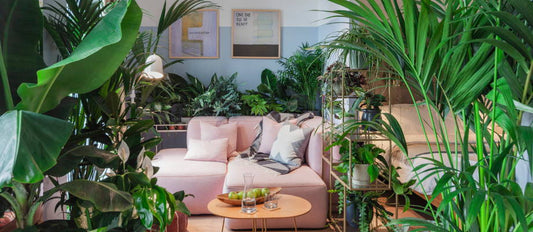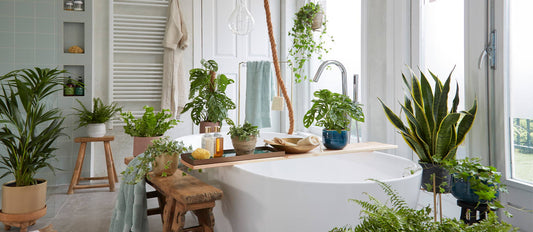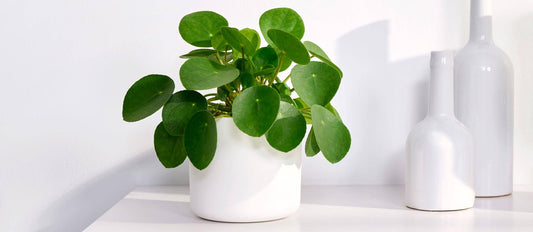The Kentia palm (Howea forsteriana) lends a lovely tropical atmosphere to your house. This palm belongs to the Arecaceae family and originally came from Lord Howe Island, located east of Australia. The Kentia palm is one of the most popular, easiest to care for and most robust types of palm and is happy anywhere in the house, or in other public areas. When light hits the leaves it brings a gorgeous green touch to the house. Did you know that the Howea forsteriana will also purify the air in your home? The indoor plant helps to improve your living climate.
Caring for the Kentia palm
The Kentia palm is one of the few palms that can tolerate relatively little light. This easy-care indoor palm needs less light than other palms. Put it in the shade or partial sun. Has the plant stopped growing or developing leaves? Then give the plant a little more light by moving it closer to the window. If the colour of the leaves starts to turn light green to yellow, it is getting too much sun. The palm loves to be at room temperature. So avoid places that are chilly with lots of draughts or quite warm places, such as near a radiator.
The palm thrives best when its root ball is slightly damp, but it should never be so wet that there is a layer of water at the bottom of the pot. If this happens, the plant's roots can start to rot. Give the Kentia a small amount of water once every five days. In winter, you can water it once every 10 days. The amount of water the plant needs may change as it grows or if it's in a place where it's too warm or gets too much light. So always feel the soil to see if it needs any water or not. If the air in the room is too dry, it is advisable to spray the Kentia palm from time to time. Standing it in the shower or outside in a light rain shower will freshen it up and prevents spider mites. Ideally, spray the plant with distilled or softened water.
Give the plant a little plant food that is designed for palms every 2–3 weeks between April and September to keep it growing. It is important to give the right nutrition so that the plant can develop optimally. To do this, mix liquid fertilisers with water or use soluble sticks. Either of these options will provide the plant with the right amount of food. The Kentia palm does not grow in winter and will not need feeding.
Good to know!
- The Kentia palm grows fairly quickly and will have to be potted on about once every two years. Use a flower pot that is at least 1 pot size, or 3 cm, larger. Always use fresh potting soil when potting on.
- If the leaves begin to discolour, the palm is sending a signal. Yellow leaves mean too much light, brown leaves mean too little or too much water, and leaves with brown edges mean that the leaves are dying. Take the appropriate measures and cut off the discoloured leaf.
- The Kentia palm reproduces via seeds. Plant cuttings will not be viable. The plant can be propagated by splitting the root ball, but this is risky and the plant may not survive.
- This palm is not toxic to pets.




